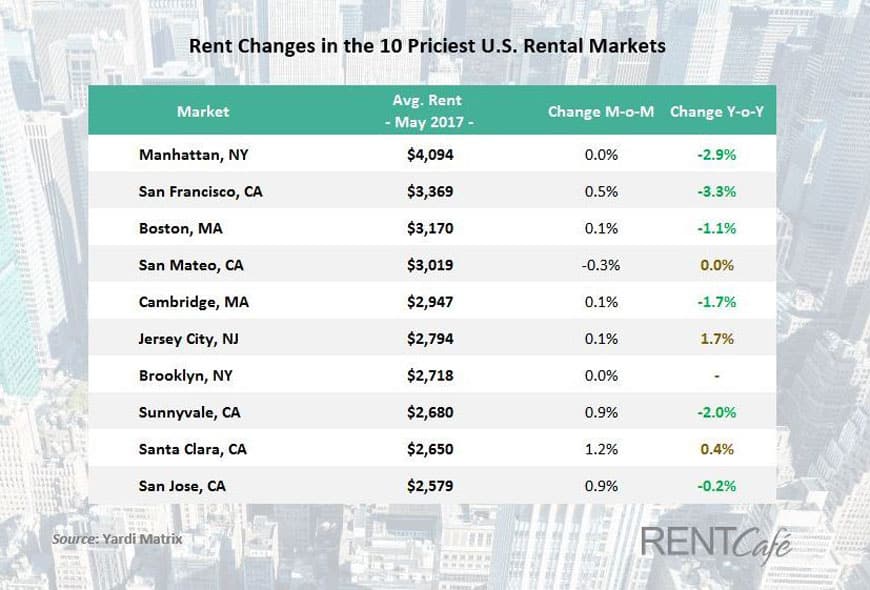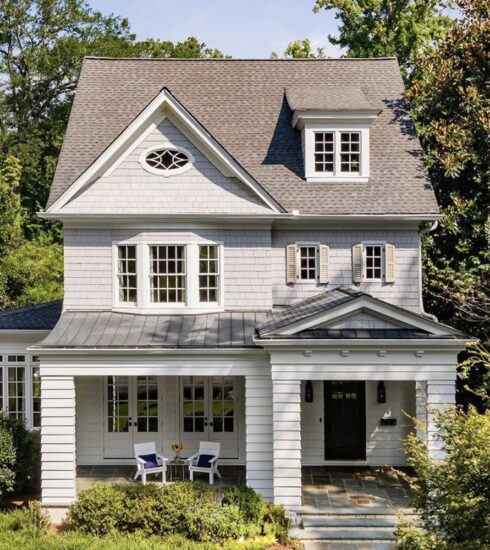Millennials Gain New Housing Opportunities as Rents Cool Across the Nation
Millennials can finally rejoice. While homeownership may be still difficult due to ever-rising housing prices, it appears renting is inching toward affordable – even in some of the nation’s hottest markets. In fact, May saw rent growth hit its lowest point in the last three years, and it has many wondering: could the days of record-setting rent hikes be behind us?
RENTCafé, a national apartment search website, recently reported that May rents reached $1,316 on avg., an increase of only 0.3% for the month and 1.5% over the year. RENTCafé used numbers from its sister company, Yardi Matrix, an apartment market intelligence provider.
“Renters have much reason to be optimistic,” senior analyst Doug Ressler said. “After a long period of incessant rent increases, rents are finally slowing down – even in some of the country’s higher-rent cities, like San Francisco and New York. Even if demand for apartment living is still robust, rent growth will continue to taper off in the coming months, mainly prompted by the record number of new apartments entering the country’s tightest markets.”
New Construction Edges Down Rents in the Country’s Priciest Markets
Apartment construction has been booming since 2010, with California, New York and Texas seeing particular growth. Between 2010 and 2016 alone, the Long Island City neighborhood in Queens, New York, gained more than 12,000 units. Downtown Los Angeles saw 7,551 new units hit the scene, while North San Jose gained nearly 7,000. In Dallas, the 5,839 units built during the last 7 years in Uptown make up 67% of the area’s total apartment numbers.
Construction in these traditionally expensive markets is helping make some of the nation’s hottest cities just a little more affordable for young buyers. Average rents dropped in six out of the country’s 10 priciest markets in May, including San Francisco, Manhattan and Boston. San Francisco actually led the nation in rent decreases, with a 3.3 percent decline over the last 12 months.
Other cities with high millennial interest also edged down in terms of rent growth; rents in Cambridge, Massachusetts, dipped 1.7 percent over the year, while College Station, Texas, saw rents decline 1.6 percent. Oakland, California, rents dropped 1.9 percent.
Millennials a Different Breed of Renter, Sending Luxury Units into High Demand
Though declining rents are certainly bringing more renters to the market, it’s important to note that a large portion of millennials actually favor renting – despite the long-held idea that homeownership is a crucial part of the “American Dream”.
Millennials represent a different breed of renter than in years past. Many don’t rent out of necessity or because housing prices are out of reach. In fact, many prefer renting.
As a whole, they are marrying later than past generations, having kids later than their forefathers and living more transiently than many who came before them, and this requires a level of flexibility in their living situations. They don’t want to worry about property taxes or home maintenance, and they yearn for the amenities apartment living can offer.
As this generation trends more and more toward by-choice renting, construction of a luxurious apartment – or just properties with luxurious amenities – continues to rise. Take Dallas, for example. The Texas city is overwhelmed with new luxury units, ones like The Statler Residences, which boast dry cleaning, room service, pet walking, housekeeping, a pool and lounge, a tanning area, a 24-hour fitness center and more. It’s a level of luxury that homeownership just can’t offer, and as apartments continue to up their game in terms of amenities, we can expect this up-and-coming generation to continue renting – regardless of what changes the market might hold.
The Statler Residences in Downtown Dallas
Not All Rents Are Down; Small Cities Around Big Metros See Jump
Though the nation is certainly seeing rent growth stall in many markets, there are still some holdouts where rents continue to rise – particularly in smaller cities surrounding large metros. As more and more renters get edged out of the larger markets due to price, they migrate outward, toward local suburbs and communities for a more affordable lifestyle.
While the tactic may have worked for a time, spiking demand in these surrounding neighborhoods is driving prices through the roof. San Diego, for example, saw a mild 1.6 percent year-over-year jump in rents, but the cities encircling it? El Cajon, Escondido, and Chula Vista posted well above-average increases for the year.
The same goes for the San Jose area, where nearby cities Sunnyvale and Santa Clara are clocking in with some of the nation’s highest rents – even higher than San Jose itself – at $2,680 and $2,650, respectively.
For Affordable Markets and Healthy Economies, Look to the South or Midwest
According to May data, young renters are best served by markets in the Midwest and Southern regions of the U.S., where rents are low, economies are strong, and jobs are readily available. The top 10 lowest rent cities included Wichita, Kansas; Toledo and Dayton, Ohio; Tulsa and Oklahoma City, Oklahoma; Brownsville, Killeen and Amarillo, Texas; Fort Wayne, Indiana; and Independence, Missouri.
And while any of these markets would make an affordable option for the millennial renter, Oklahoma City and Fort Wayne stand out as the strongest options. Ranked as the No. 36 place to live by U.S. News and World Report, Oklahoma City boasts a strong job market and an average annual salary of more than $44K. The city’s cost of living is well below the national average, and rents sit at just $713 per month.
Fort Wayne is also a good option. Earlier this year, WalletHub named the city the No. 15 best place for jobs and ranked its job market No. 8 in the entire nation. And with a low average rent of just $701—less than half the national average – costs of living are affordable, too.










